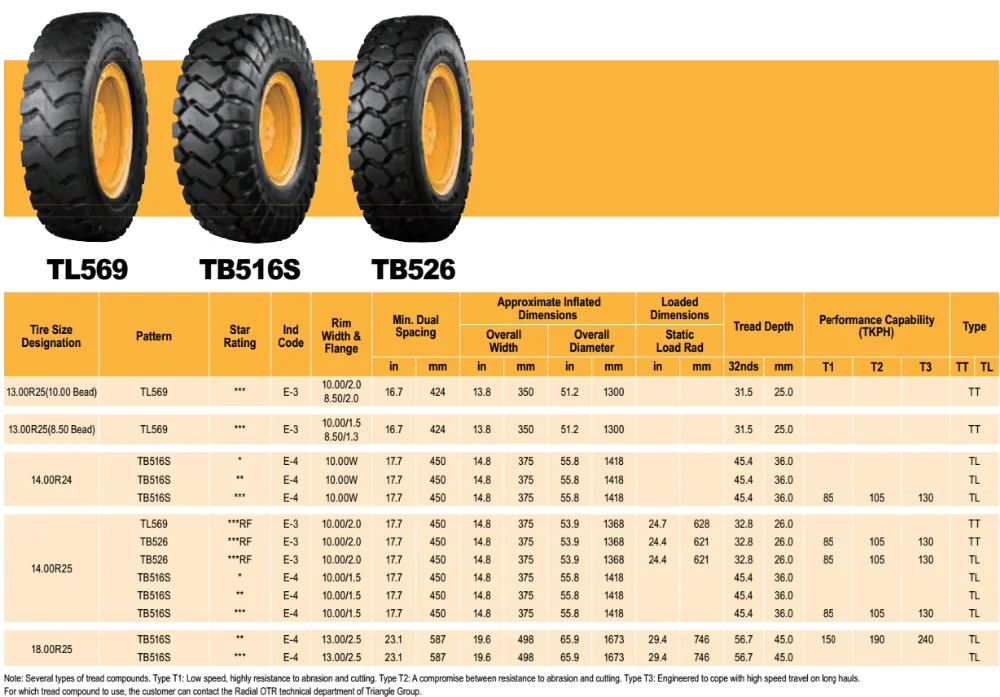Tire Safety Starts with Trained Technicians!
TIA offers a variety of training for new hires, as well as experienced tire technicians. Our ETS programs cover all aspects of OTR tire service and can be delivered online or in person, with hands-on instruction.
Keep your techs safe, customers happy and better your business with TIA’s Earthmover Tire Service Training.
Register for Upcoming Classes
Basic Earthmover Tire Service (ETS) is a 200-Level course outlines the minimum skills and safety guidelines for servicing one-piece, three-piece, five-piece, and double gutter OTR assemblies. Basic ETS is available through the TIA Online University or can be delivered in-person utilizing video, workbooks and paper exams.
There are also hands-on classes available several times a year. Our Adv. ETS Hand-On Course combines the Basic ETS Classroom portion with two full days of hands-on training, including service truck operation, hydraulic tools and a variety of equipment that can aid in servicing OTR tires.
The Basic ETS consists of the following 15 Modules:
Request More Info
Register for Upcoming Classes
Certified Earthmover Tire Service (ETS) is designed for experienced OTR technicians, with several years of hands-on experience. In addition to successful completion of the final exam, students must show proficiency in the field by demonstrating the ability to perform various skills that must be witnessed and signed off on. Each student who successfully passes the course receives a Certificate and 13 Uniform Patches. Recertification is required every two years via an online exam.
Certified 300 Level Technician courses must be conducted by a TIA 400 Level Instructor. These train-the-trainer classes are held throughout the US each year in several cities. Check out our Upcoming Classes to find an Instructor class near you!
Certified ETS consists of the following Modules:
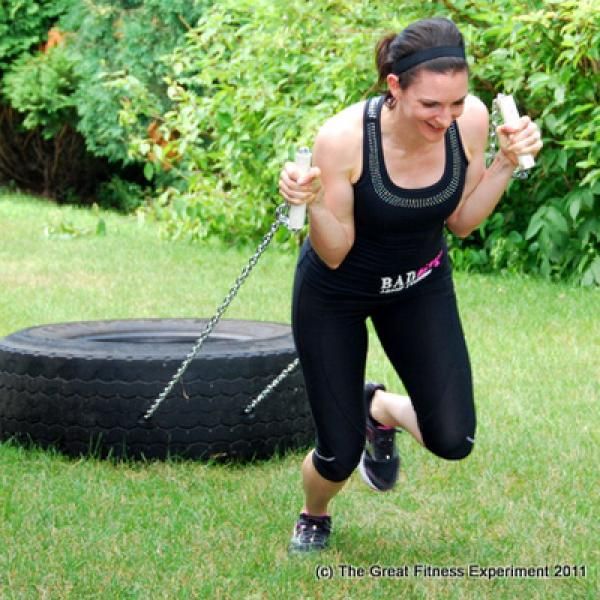
*Basic Commercial Tire Service (CTS) and Basic Earthmover Tire Service (ETS) are prerequisites for these courses.
Request More Info Find a Certified Trainer
After two years of probably the strangest logistics we’ve lived through—and a roller coaster ride of an economy—the OTR tire market is surprisingly robust.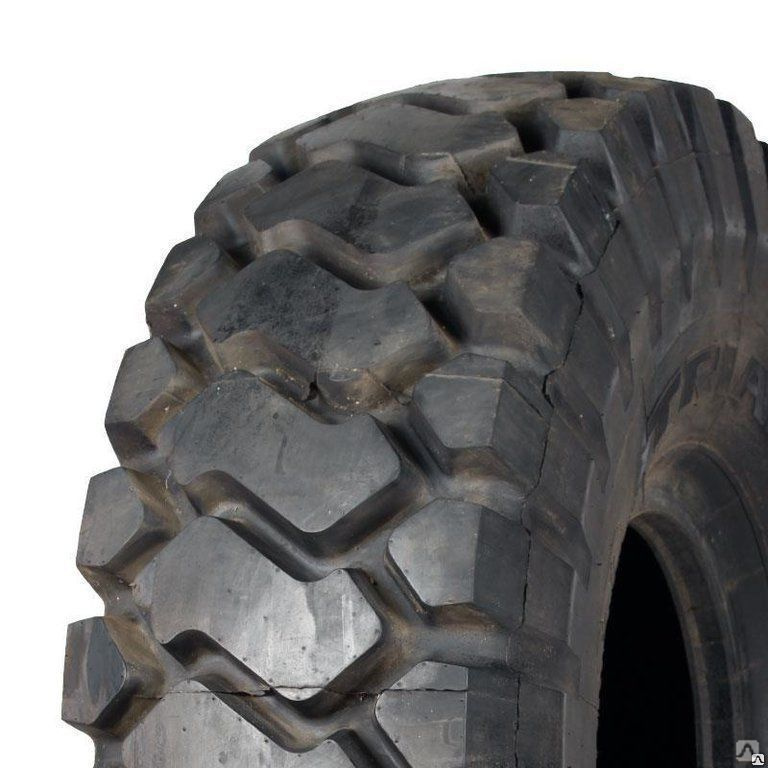 The construction industry has slowed down slightly, and there’s a lot of talk about a recession, but so far, we haven’t seen a lot of publicly or privately funded projects pull back, and quarries and mines are running hard. All that activity is good for the tire industry.
The construction industry has slowed down slightly, and there’s a lot of talk about a recession, but so far, we haven’t seen a lot of publicly or privately funded projects pull back, and quarries and mines are running hard. All that activity is good for the tire industry.
Where we might see the most “wobble” or impact of a recession is likely to be in construction’s version of what the trucking industry calls “the last mile,” the end work that’s done around buildings and roads after the big machines have done the heavy dirt work. That’s the realm of smaller equipment, the 25- and 29-in. tires where a lot of the OTR business lies.
From massive earthmovers to little skid steers, every machine—and innovation—is geared toward maximizing productivity, and every tire has to contribute. When we look at how OTR tires have had to keep up with innovations in equipment, much of the challenge has been around torque, especially with loaders.
Some of the most exciting loader tire innovations have been around changing profiles to wider tires and larger rim diameters. We’re seeing sizes like the 875/65R29 moving 29.5R25s aside. You’ve got five more inches of width, approximately the same OD, and a shorter sidewall that gives you better torque delivery, better braking and more stability. That all contributes to greater productivity for the operator.
We’re seeing sizes like the 875/65R29 moving 29.5R25s aside. You’ve got five more inches of width, approximately the same OD, and a shorter sidewall that gives you better torque delivery, better braking and more stability. That all contributes to greater productivity for the operator.
Compound chemistry is also critical. The push for higher load-carrying capacity and higher speeds are pushing innovations like stronger bonding materials within the casing to handle extra stress, and we’ve seen great advances in compounds that protect sidewalls in tough applications like underground mining.
Customers are demanding a higher degree of tire uniformity, contributing to handling, vibration reduction and operator comfort, all of which add up to higher productivity.
The equipment industry’s focus on developing electric machinery will put everything we’ve learned about OTR tires to the test. Those machines are heavy, and they are powerful—electric equipment delivers a lot of torque and delivers it immediately.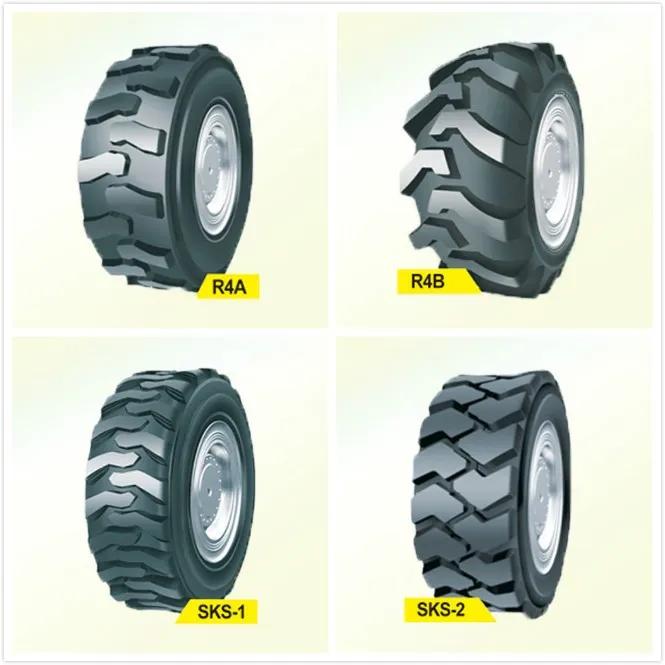 That puts a lot of stress on tires. We need to be designing, engineering and manufacturing with those challenges in mind.
That puts a lot of stress on tires. We need to be designing, engineering and manufacturing with those challenges in mind.
Power savings will also be critical. Decades of relatively inexpensive diesel and gas have covered up some shortcomings when it comes to energy efficiency. But when operators are counting the minutes between charges on electric machinery, efficiency is going to matter like never before—rolling resistance, slip, anything to do with getting the most out of every kilowatt-hour.
New machines are not the only changes we see on the job site. We are in an extremely tight labor market. That means construction, quarries and mines are going to be training new people. What that means for OTR tires is that we’re likely to see a lot of wear from hard braking, grinding turns and hitting piles hard while operators are in the learning phase. Just as important: Are those new operators being trained to check tire pressure? We in the industry know that is by far the best thing you can do to ensure full tire life.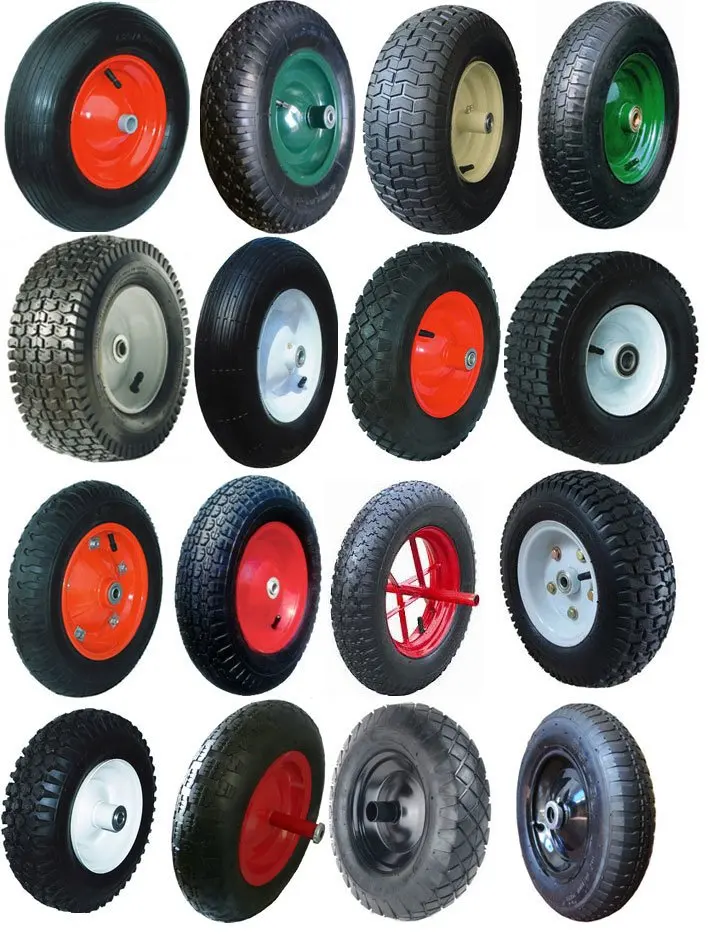 We need to encourage our customers to teach that to their employees.
We need to encourage our customers to teach that to their employees.
The tire industry itself is subject to the same challenge. We’re going to see a generation of new technicians and salespeople. For us, safety has got to be first and foremost. Right behind safety will be the need to learn about the latest in tire technology and how to apply that technology to benefit customers—something manufacturers are going to have to help with. And finally, there’s communication, the most fundamental part of a successful business.
As enticing as new technology is, the fundamentals are still going to be key to success. You have to get out there and find out what your customer needs. For the dealer, that means talking to equipment owners to learn about their conditions, how they are using their tires and what contributes to their productivity.
Successful communication for a dealer is also making sure those customers are effectively using the technology they have invested in. Does your customer know what he has on his machine?
Does your customer know what he has on his machine?
The farm tire business has given us a look at this challenge. VF technology, with its very high flexion sidewalls and low inflation pressure, has been proven to increase productivity and increase agricultural yields. But we have seen time and time again where farmers buy VF tires and just inflate them to the higher pressures they are accustomed to using. They are not up to speed on the technology, and as a result, they don’t benefit from all of its real potential.
Does your construction customer make conscious decisions between bias and radial tires based on cycle and conditions? Is your quarry customer making note of changes in surfaces, slopes and the quality of what they’re mining when they are choosing a compound? Are either of those customers inflating their tires based on load/inflation tables, or are they just using the pressures they have become accustomed to?
Fortunately, we each have the industry’s most powerful tool in our hands to help our customers be as safe, productive and as profitable as possible: a mobile phone.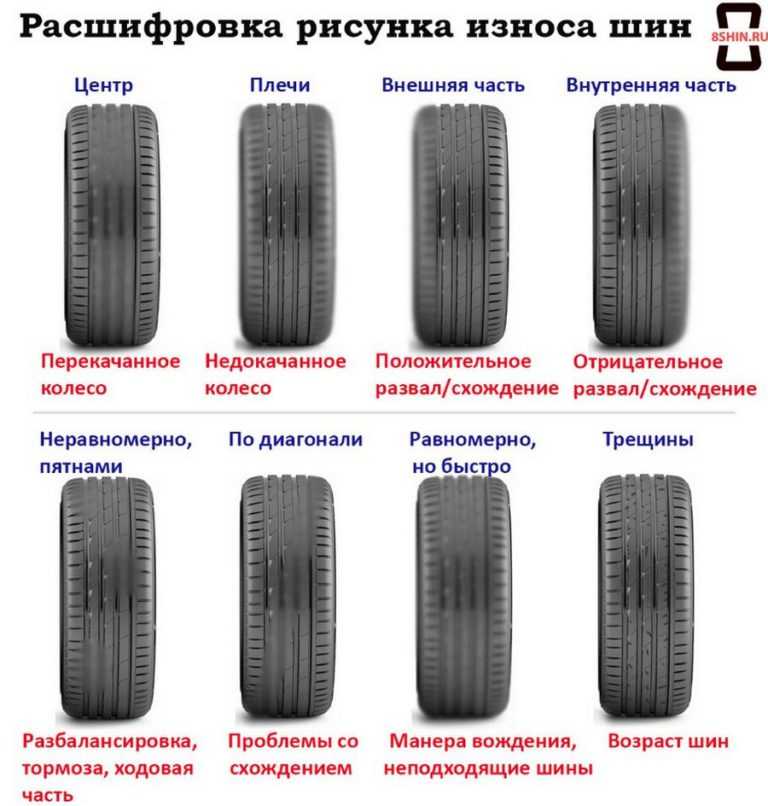 We can be in immediate contact with a foreman who can tell us he needs a tire now. We can send an inflation table to an operator with a couple of quick taps. At Yokohama Off-Highway Tires, for example, a salesperson in the field can look into our warehouse and check the up-to-date inventory of a specific tire through advanced online portals. That is immensely powerful.
We can be in immediate contact with a foreman who can tell us he needs a tire now. We can send an inflation table to an operator with a couple of quick taps. At Yokohama Off-Highway Tires, for example, a salesperson in the field can look into our warehouse and check the up-to-date inventory of a specific tire through advanced online portals. That is immensely powerful.
As we work our way through the inevitable challenges of the coming year—whatever the economy throws at us, the hassles of hiring and training, projects that start or stop—the OTR tire business will continue to revolve around making sure customers get the tires they need. Customer service and communication will never be outmoded.
MORE: Port Tire Industry Grows as Shipping Industry Pressure Mounts
The training of specialists for tire repair centers is a voluntary matter, based on the motivation of staff to achieve this or that level of skill in this area.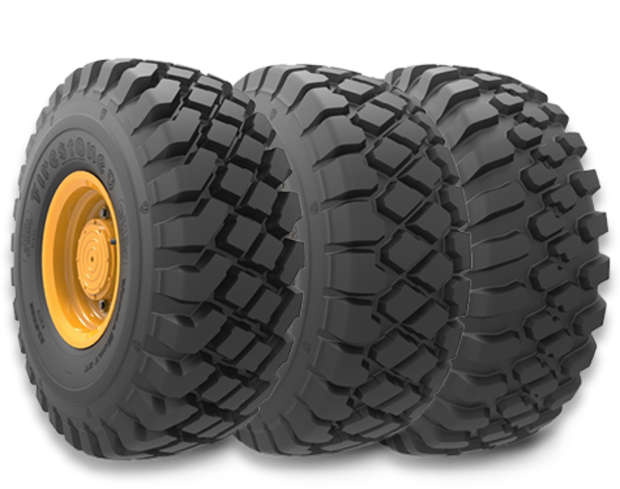 The desire to learn, improve and improve skills directly depends on the goals set. Therefore, today it has become a common phenomenon to conduct training courses that are attended by both new employees of tire repair companies and the owners of such companies themselves. In most European countries, organizing and conducting training courses is not a new practice. Manufacturers and suppliers of tires, tire repair materials and equipment regularly organize training seminars and trainings to train specialists in the field of tire repair.
The desire to learn, improve and improve skills directly depends on the goals set. Therefore, today it has become a common phenomenon to conduct training courses that are attended by both new employees of tire repair companies and the owners of such companies themselves. In most European countries, organizing and conducting training courses is not a new practice. Manufacturers and suppliers of tires, tire repair materials and equipment regularly organize training seminars and trainings to train specialists in the field of tire repair.
A similar school already exists in Ukraine, but our Czech colleagues will share the basics of organizing education in this material.
In recent years, the practice of training has become quite common, when experienced craftsmen share their secrets with novice tire repairmen. The owner or manager of a tire repair company sends beginners to senior colleagues to teach beginners the tricks of the craft as they work.
Tactics, at first glance, not bad. But here it should be noted that not all the wisdom of the "senior" is equally good. An experienced craftsman may not know at all or may have superficially defined technological processes, and in some matters he may be guided by the principle “everyone does it,” although the instructions say something completely different. In such cases, training may not be entirely effective.
But here it should be noted that not all the wisdom of the "senior" is equally good. An experienced craftsman may not know at all or may have superficially defined technological processes, and in some matters he may be guided by the principle “everyone does it,” although the instructions say something completely different. In such cases, training may not be entirely effective.
Manufacturers, suppliers of tires and tire repair materials have all the information you need about the right and new technologies. The same can be said about manufacturers and suppliers of tire repair equipment, who can provide all the necessary information about the latest developments in this area.
Suppliers of service equipment and consumables offer various types of training (according to a particular production activity). For example, training in the correct mounting/dismantling of tires, balancing fully assembled wheels, and so on.
Training is divided into two main groups : light duty vehicle tire maintenance and truck tire maintenance (this can include maintenance of tires for agricultural and industrial vehicles).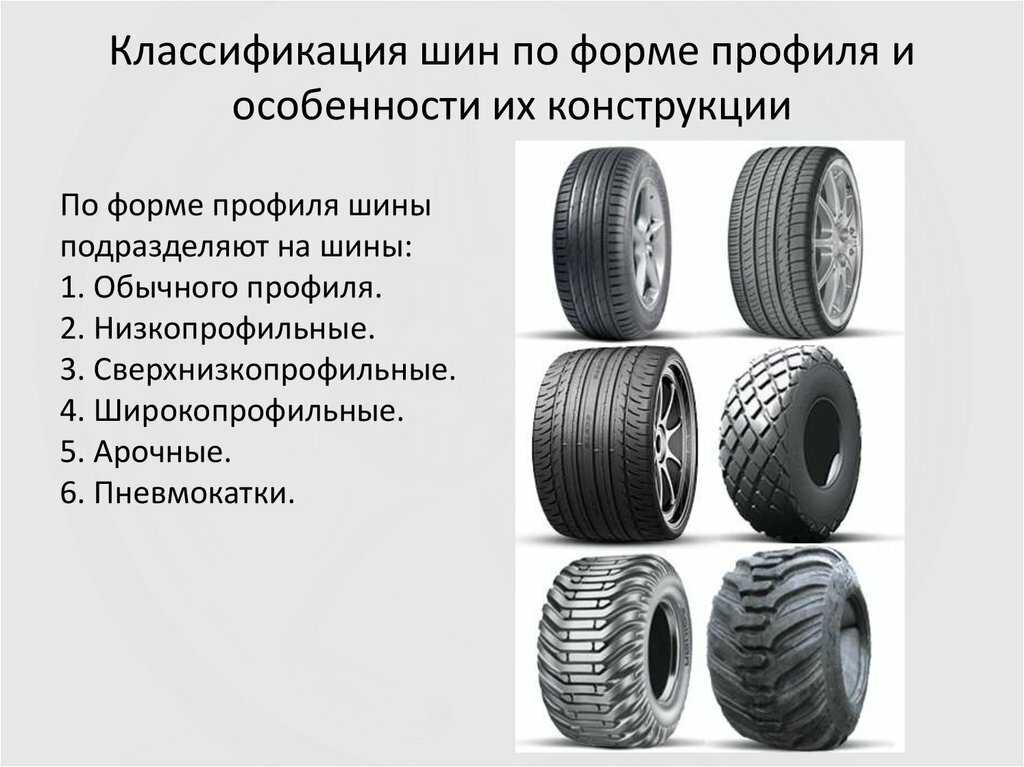 It is worth highlighting such a type of training as tire repair .
It is worth highlighting such a type of training as tire repair .
As a rule, training is also divided into two types: basic training for young specialists and advanced training for masters with practical work experience.
The listed types of training can be carried out both at the manufacturer's training center and at the premises of the person concerned. As an option, personnel training can also be carried out on a territorial basis - at the facilities of one of the end customers of such training.
Based on the fact that there are more companies specializing in repairing car tires than companies specializing in repairing truck tires, accordingly, more personnel are needed for these companies.
The training program consists of a theoretical part, in which, using audio and video technology, the workflow of car tire maintenance is demonstrated, indicating various special measures that should prevent possible damage to rims, tires, etc. For example, the process of mounting / dismounting tires is shown in great detail to prevent possible damage when they are moved over the edge of the disc. Particular attention is paid to the use of lubricants that facilitate both the removal and installation of problem tires, especially low profile or runflat tires (ensuring the continuation of the ride in the presence of a puncture).
For example, the process of mounting / dismounting tires is shown in great detail to prevent possible damage when they are moved over the edge of the disc. Particular attention is paid to the use of lubricants that facilitate both the removal and installation of problem tires, especially low profile or runflat tires (ensuring the continuation of the ride in the presence of a puncture).
It is also important to set the valve correctly in its original position (when removing and installing the tire) in order to avoid possible mechanical damage to the tire pressure monitor that is attached to the valve.
Another important part of the training is the correct balancing of the assembled wheels. Due to the trend of recent years, where wheels are getting bigger and heavier in weight, it is very important to correctly center and properly clamp the balancer shaft. In this part of the learning process, fixtures are shown that actually simulate the fixation of a wheel on a vehicle (fixing the wheels with studs).
Once the wheels have been balanced, the workflow moves on to the contact surface on the hubs, rims and mounting screws of the vehicle on the lift. The cleanliness of the screws plays an important role when tightening and when checking their correct tightening with a torque wrench. Further, the theoretical part of the training smoothly passes into the practical part, in which each work procedure is performed under the guidance of an experienced specialist.
As already mentioned, the need for such personnel is not as great as for car tire service personnel, because there are much fewer truck tire repair centers than passenger ones. It is also generally accepted that technologically servicing truck tires is somewhat simpler than servicing passenger cars. But this opinion is misleading.
As in the training of personnel for working with passenger car tires, first the staff receives theoretical knowledge, and then practical.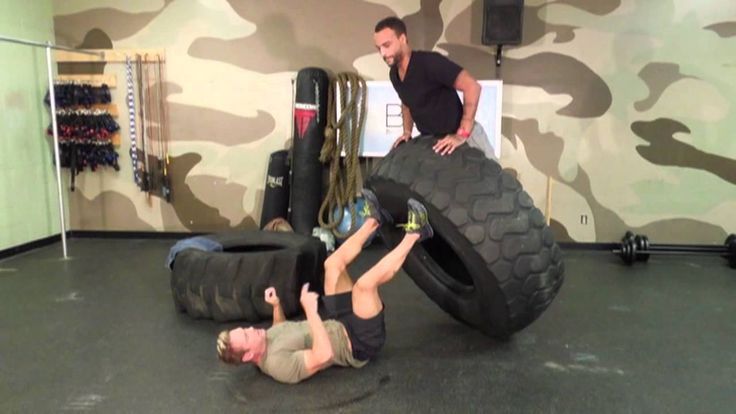 Emphasis is placed on the correct and safe lifting of trucks and on the correct fitting/dismantling of tires.
Emphasis is placed on the correct and safe lifting of trucks and on the correct fitting/dismantling of tires.
Like car tyres, truck tyres, in recent years, have seen a trend towards low profile tyres, which can be difficult to mount/demount. Special mounting pastes or liquids are used here. After balancing the wheel, the contact surfaces on the hub and disc are processed, as well as mechanical cleaning and lubrication of the screws before tightening them.
Truck tire safety is the main focus of the training. Especially when it comes to lifting cars weighing several tens of tons, inflating tires to a pressure of nine bar and correctly installing wheels on the axles of vehicles. In addition, the training process can be complicated by the need for truck tire repair personnel to service agricultural or industrial tires. As in the case of training personnel for the maintenance of passenger tires, the theoretical part of the training smoothly turns into a practical one, when each process is carried out under the guidance of an experienced specialist.
Repair of damaged tires of all sizes is one of the most common services provided by tire repair companies. Therefore, it is very important that the staff, especially the young ones, receive sufficient basic training in tire repair.
In the theoretical part, the staff is introduced to the basics of tire repair by hot and cold vulcanization.
The nature and form of damage on the tire, surface preparation at the site of damage for its vulcanization by cold or hot method is considered in detail.
Also, future specialists learn to evaluate the maintainability of tires, based on the nature and form of damage on it. This assessment is very important, as it allows you to decide whether it makes sense to repair the tire or not. A good help here will be special tables that allow you to quickly and efficiently determine the maintainability of a tire, with which each student must learn to work quickly and efficiently.
In the theoretical part of the training, students are also introduced to tire repair equipment and the theoretical foundations of working on it.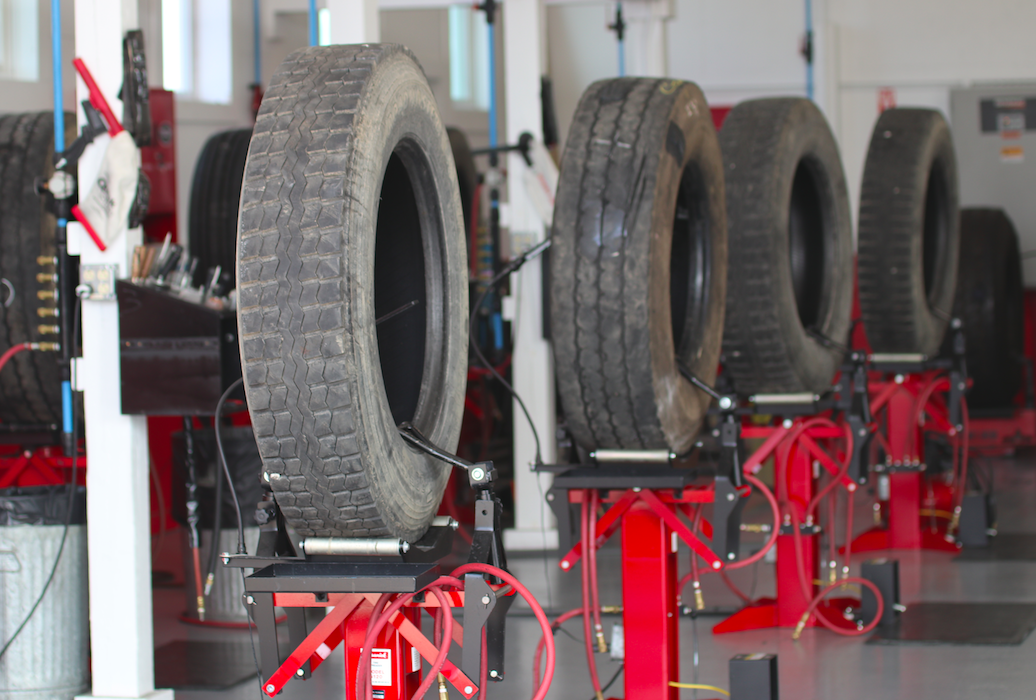
In the practical part, each repair operation is carried out on training tires, which simulate all the main types of damage that are possible on car and truck tires.
On the basis of the basic training, it is also possible to train personnel with previous work experience. To do this, it is only necessary to remove from the curriculum all the basic information already known to personnel with experience.
Experienced personnel would be interested in learning about new repair materials and new processes. At the same time, the theoretical part should be shorter than the practical one.
Staff development may be specialized. For example, studying only the repair of truck tires or only the repair of agricultural tires.
The discussions between the training participants and the teacher will also be interesting. During the discussion, an additional exchange of knowledge and experience in tire repair and maintenance is possible.
A separate type of training is the training of personnel in the use of TPMS systems, which are installed on passenger cars to monitor tire pressure. TPMS systems are not new, as they have been installed on passenger cars for almost a decade. For the most part, they are associated with security systems or with tires that have the function of reaching when they are damaged (runflat). Some tire concepts (Michelin PAX BSR Bridgestone) require constant pressure monitoring. Cars equipped with runflat tires must be equipped with a tire pressure monitoring system (it is installed at the factory of the car).
TPMS systems are not new, as they have been installed on passenger cars for almost a decade. For the most part, they are associated with security systems or with tires that have the function of reaching when they are damaged (runflat). Some tire concepts (Michelin PAX BSR Bridgestone) require constant pressure monitoring. Cars equipped with runflat tires must be equipped with a tire pressure monitoring system (it is installed at the factory of the car).
Systems are divided into direct (controlling pressure and temperature in the wheels using a sensor installed or directly connected to the chamber valve) and indirect (working through ABS sensors).
Both types of TPMS are in use today, but direct systems are more common. Starting in 2014, TPMS will no longer be limited to runflat tyres, as they will be mandatory on all new passenger car wheels this year. Thus, there is a need for a new type of training - the maintenance of direct tire pressure monitoring systems.
In the theoretical part of the training, the participants of the training get acquainted with the legislation governing the installation of TPMS, sensor replacement, programming and diagnostics, as well as the process of mounting / demounting a tire with TPMS. Then the theoretical part of the training turns into a practical one, where all work processes related to TPMS are performed under the direct supervision of an experienced specialist.
Then the theoretical part of the training turns into a practical one, where all work processes related to TPMS are performed under the direct supervision of an experienced specialist.
The direct result of training should be theoretical and practical knowledge that will be useful in the future work of the staff. If a beginner has passed the course, it is desirable that he has all the opportunities for the practical application of the acquired knowledge at the place of work. If a tire repair worker with work experience has passed the training course, it is desirable that he supplement his practical experience with new theoretical knowledge that is useful in his work.
In addition, the theoretical and practical parts of the training can be supplemented with product presentations, various tests, qualifying competitions, competitions, quizzes, optional programs, etc. However, any training should always result in an increase in the qualifications of tire repair workers, and therefore an improvement in quality services provided to end consumers.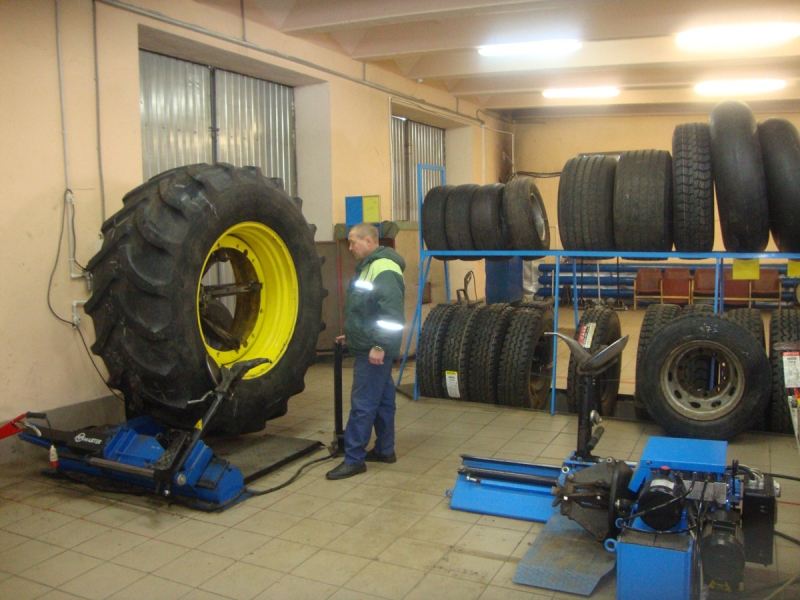
Yaroslav Prokop
When using materials from our site, a hyperlink to tire.com.ua is required.
Comprehensive Service - Customer satisfaction is our #1 priority!
With over 30 years of tire field service experience and in-depth knowledge of TPMS, Haian not only produces high quality tires, but also builds a professional service team of 1,200 well-trained engineers to provide you with a comprehensive tire solution. Our goal is to minimize tire operating costs, increase productivity and ensure safety in the workplace.
pre-sales service analysis and report
Because SHGs are used on heavy haul trucks in harsh environments, tire selection is influenced by numerous factors such as climate, temperature, facility conditions, road conditions, truck information, etc. Choosing the right tires will increase fleet productivity. Therefore, the correct choice of tires is very important for customers.
Therefore, the correct choice of tires is very important for customers.
For each client, our engineers will come to the quarry to collect all the necessary information. They will then analyze the data to generate a report. Finally, our expert will suggest to customers, based on the report, which tread compound and pattern is suitable for their operating conditions. Typically, the following information should be collected:
▪ Basic information about the quarry: ore, production, ratio, etc.
▪ Weather conditions: temperature, rainfall, etc.
▪ Rolling stock information: payload, quantity, tire size, rim, etc.
▪ Pit information: loading capacity, transportation distance, loading, speed, etc.
▪ Road conditions
▪ Using VBOX to calculate TKPH.
▪ Generation of a report for recommendations on the correct selection of Luan tires and pressure.
after sales service:
Haian believes that on the day the tires are delivered, our service is just beginning. In order to reduce the total cost and maximize tire efficiency, we implement a full range of after-sales services according to decades of honed tire maintenance experience, which includes: tire tracking, tire management, tire maintenance, tire repair, tire retreading, training and reporting.
In order to reduce the total cost and maximize tire efficiency, we implement a full range of after-sales services according to decades of honed tire maintenance experience, which includes: tire tracking, tire management, tire maintenance, tire repair, tire retreading, training and reporting.
Tire Tracking Service
For best tire performance, the tire must be operated at the correct inflation pressure. Over-inflation and under-inflation will shorten the life of the tire and even damage it. Therefore, we provide a Tire Pressure Monitoring System (TPMS) to monitor tire pressure in real time. This helps the end user understand the characteristics of the tire and make pressure adjustments before an accident occurs.
We have also launched a Tire Data Management System (TDMS) to track the entire life path of each tire from commissioning to disposal. Our customers can manage and monitor tire data more efficiently and improve productivity with this system.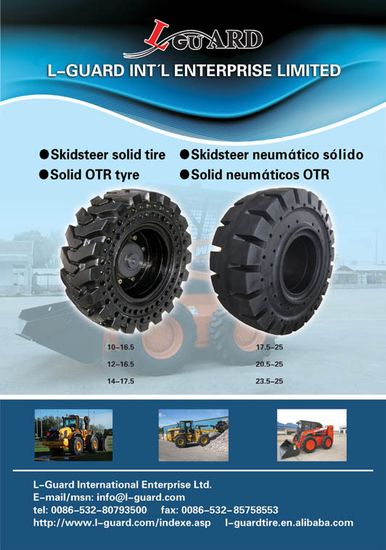
Photo: Haian launches TDMS and trains our customers
What's more, our engineers regularly visit facilities to conduct surveys such as heat survey, TKHF, loading, tread wear analysis, road survey, etc. The results of these surveys will help to identify existing problems. Then our engineers will present a proposal based on the facts. Everything should be based on data and facts, this is our principle.
Tire management: tire accounting and data management
We provide predictive maintenance through tire inventory and data management. Inventory management forecasts tire demand and eliminates shortages. This minimizes the risk of downtime due to insufficient tire stock. The tire data management system will report problems and help the user improve tire performance and reduce operating costs.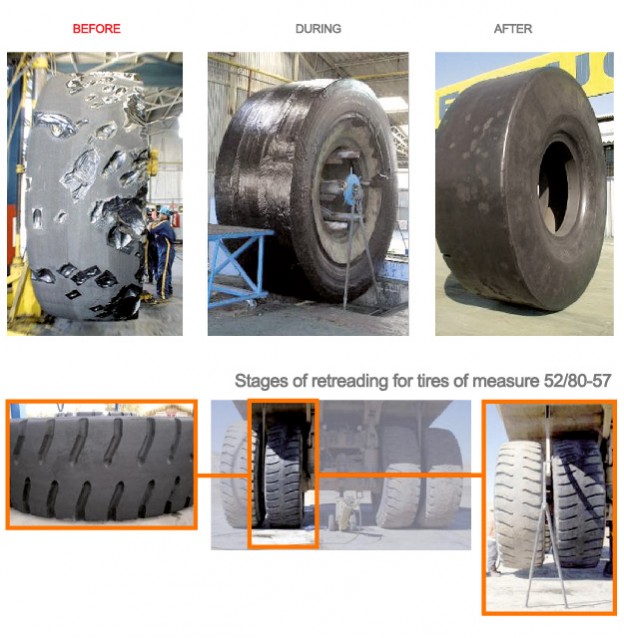
tire maintenance
Regular tire maintenance helps ensure maximum tire life and minimum cost per hour. Tire maintenance includes, but is not limited to, proper tire selection, tire mounting and demounting, tire pressure monitoring, tire rotation, TKHF testing, tire storage, road maintenance.
Tire repair and retreading
When it comes to tire repair and retreading, we are the most professional and reliable service provider than anyone else with over 30 years of experience in the field. We provide tire repair and retreading services instead of buying new tires to save costs. On the other hand, it also helps to protect the environment by extending the life of tires and reducing the number of tires used.
Reports
Submission of the report contributes to the improvement of communication and cooperation between the client and us. Our engineers regularly provide customers with tire performance, tire scrap data, and suggestions for improving tire performance.